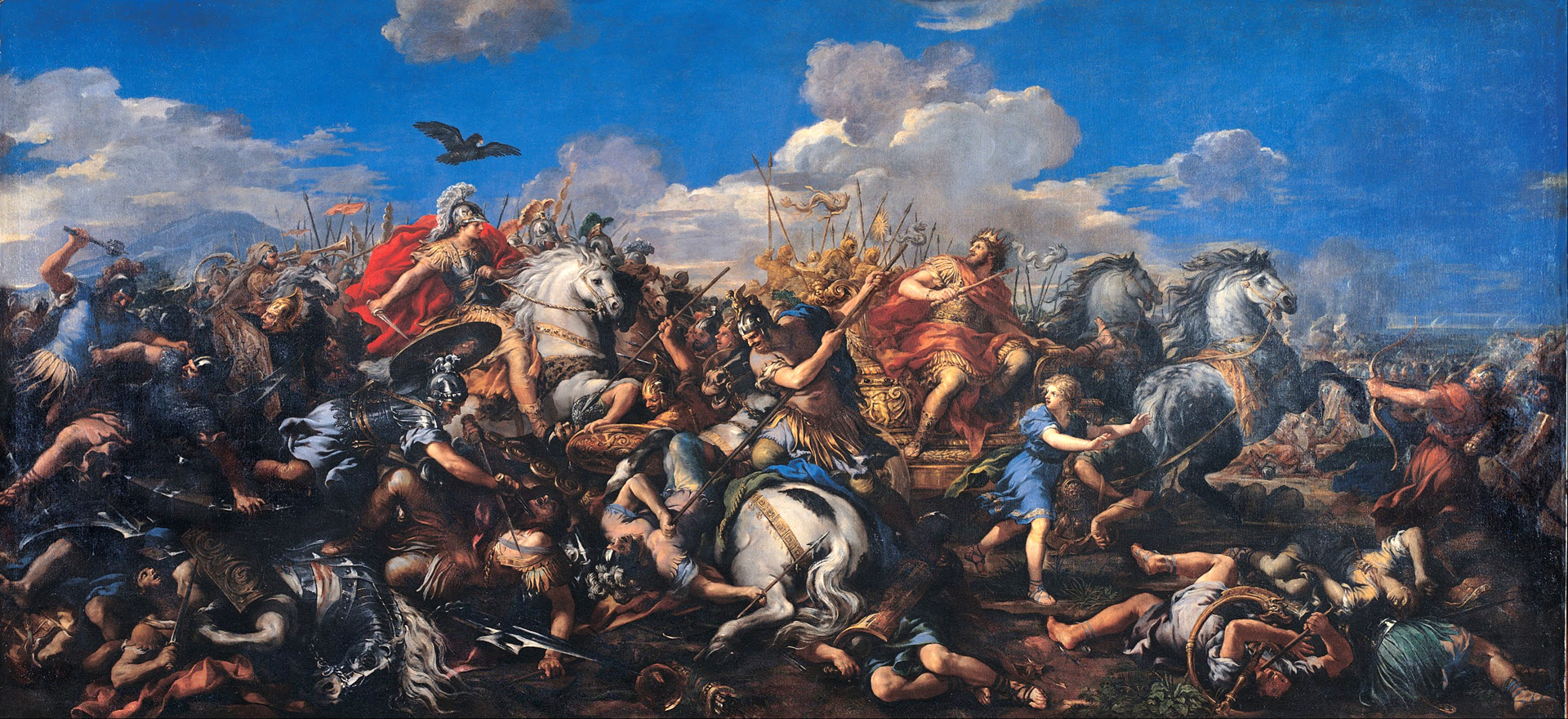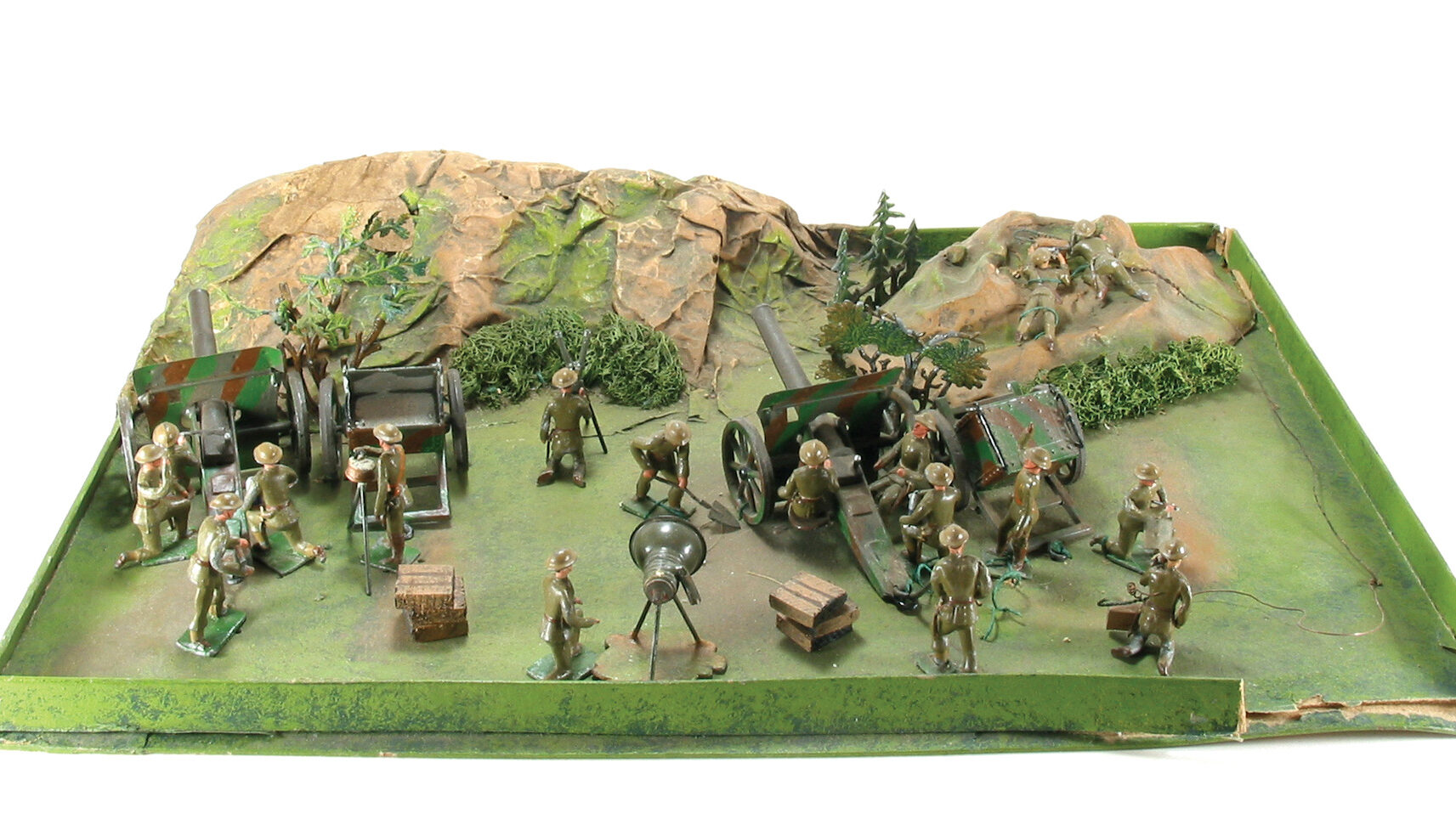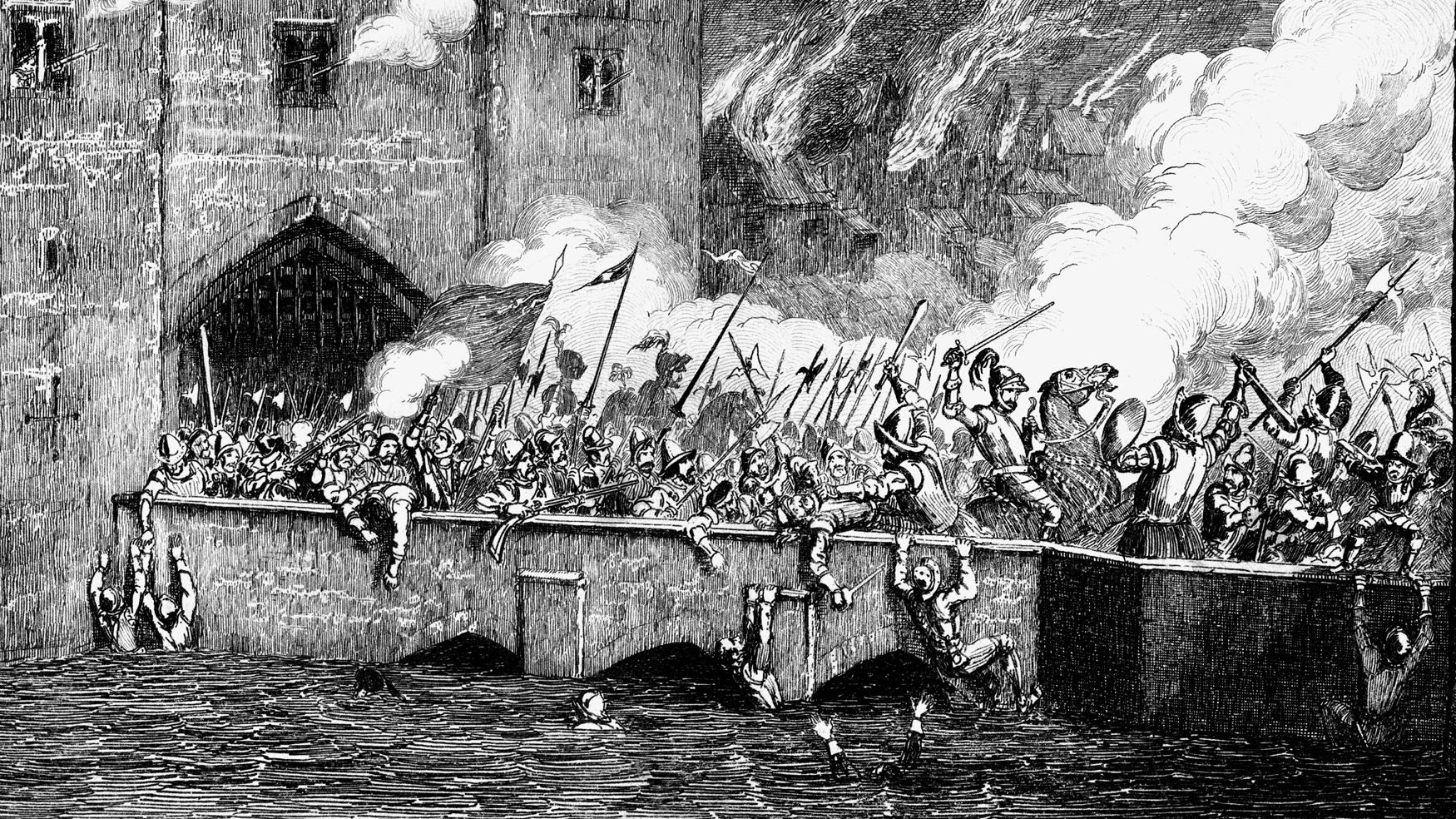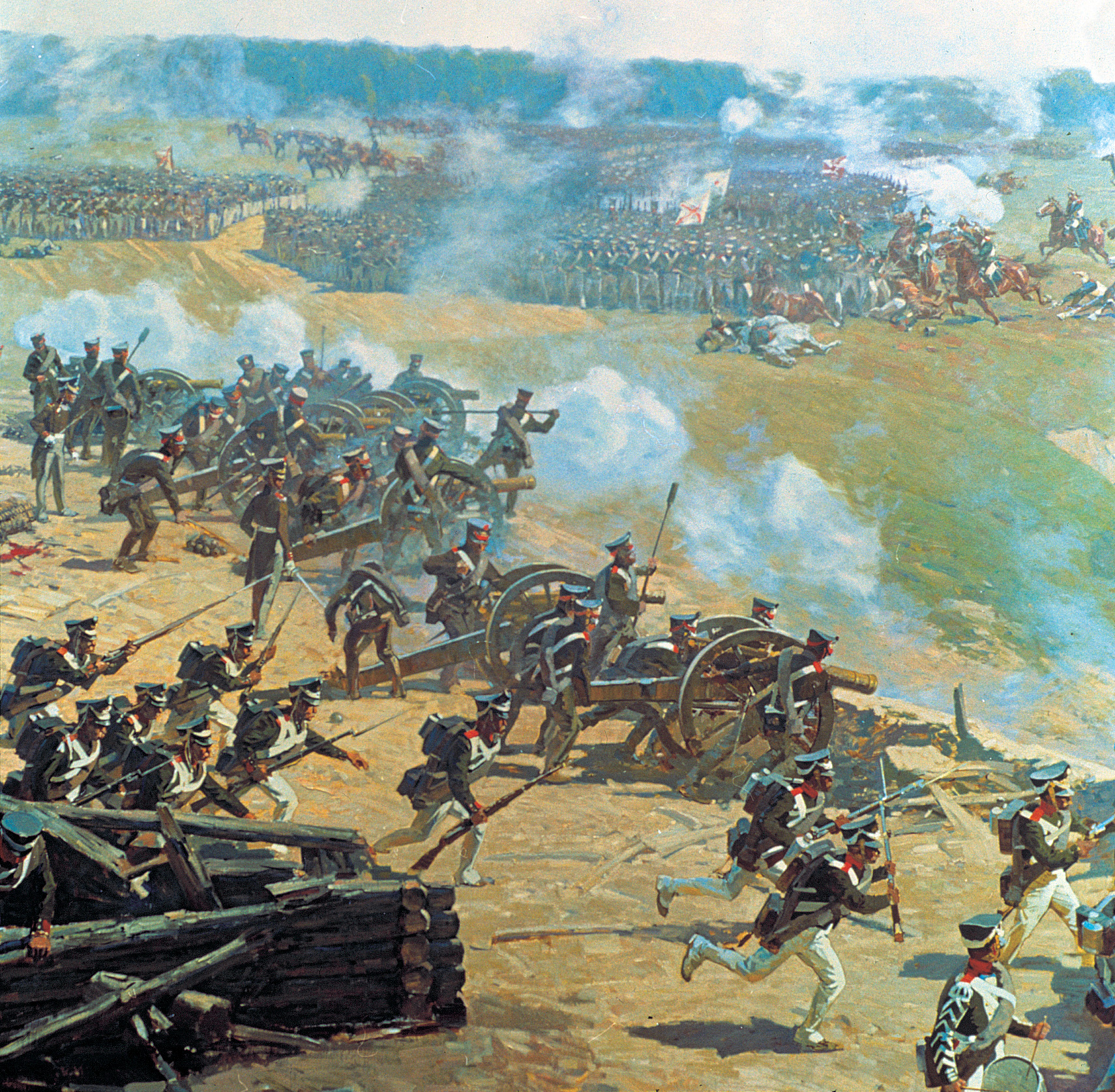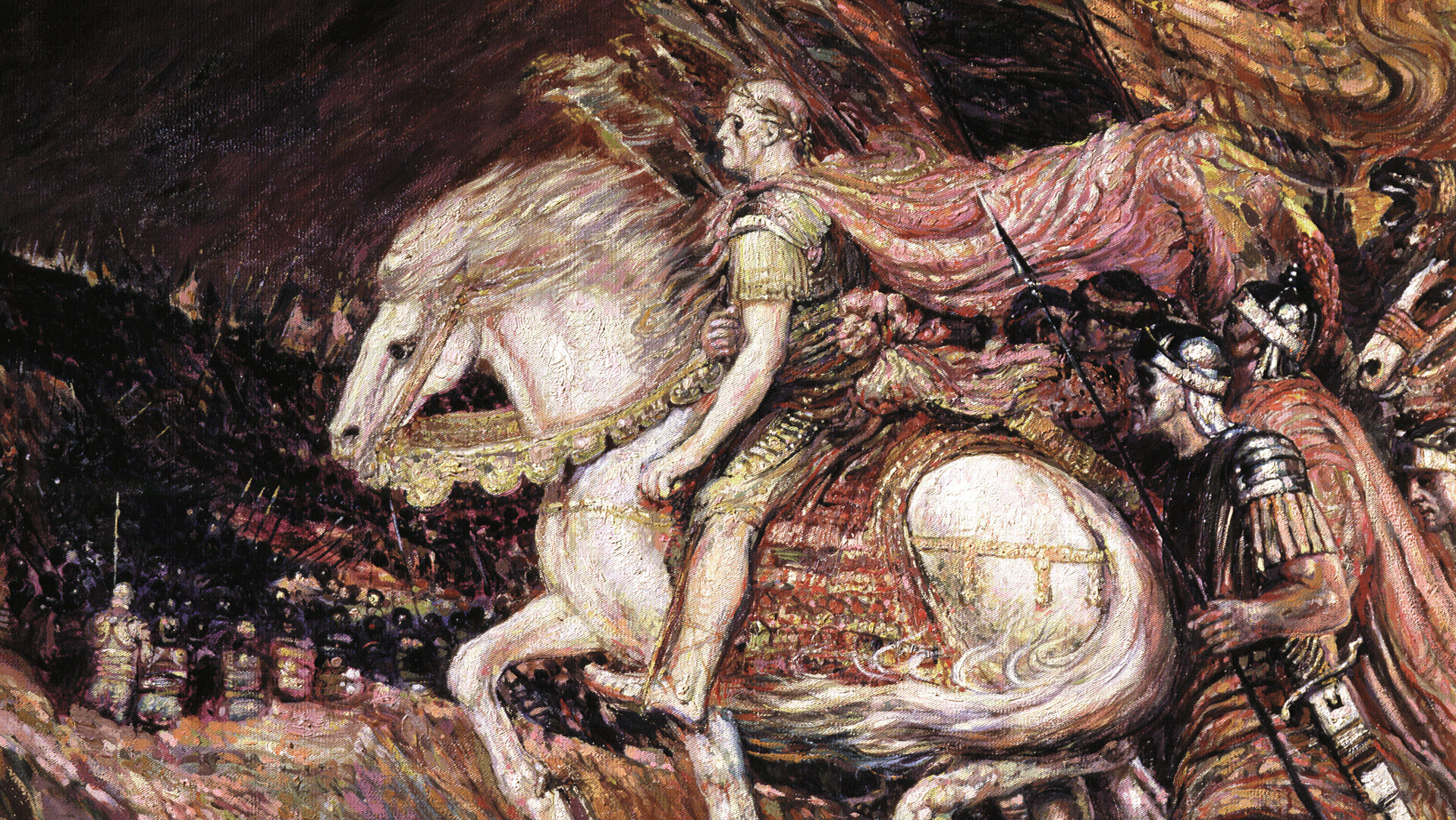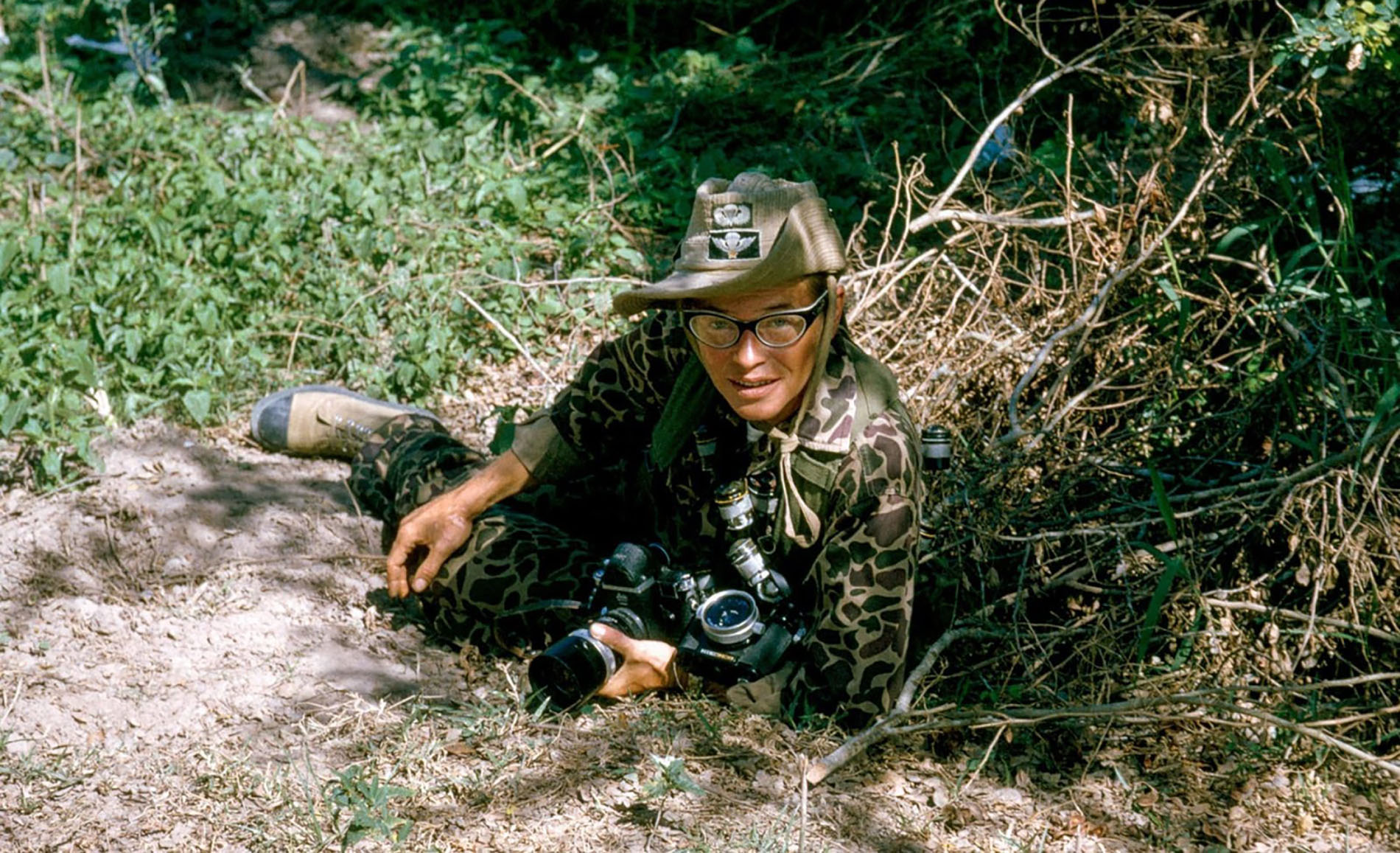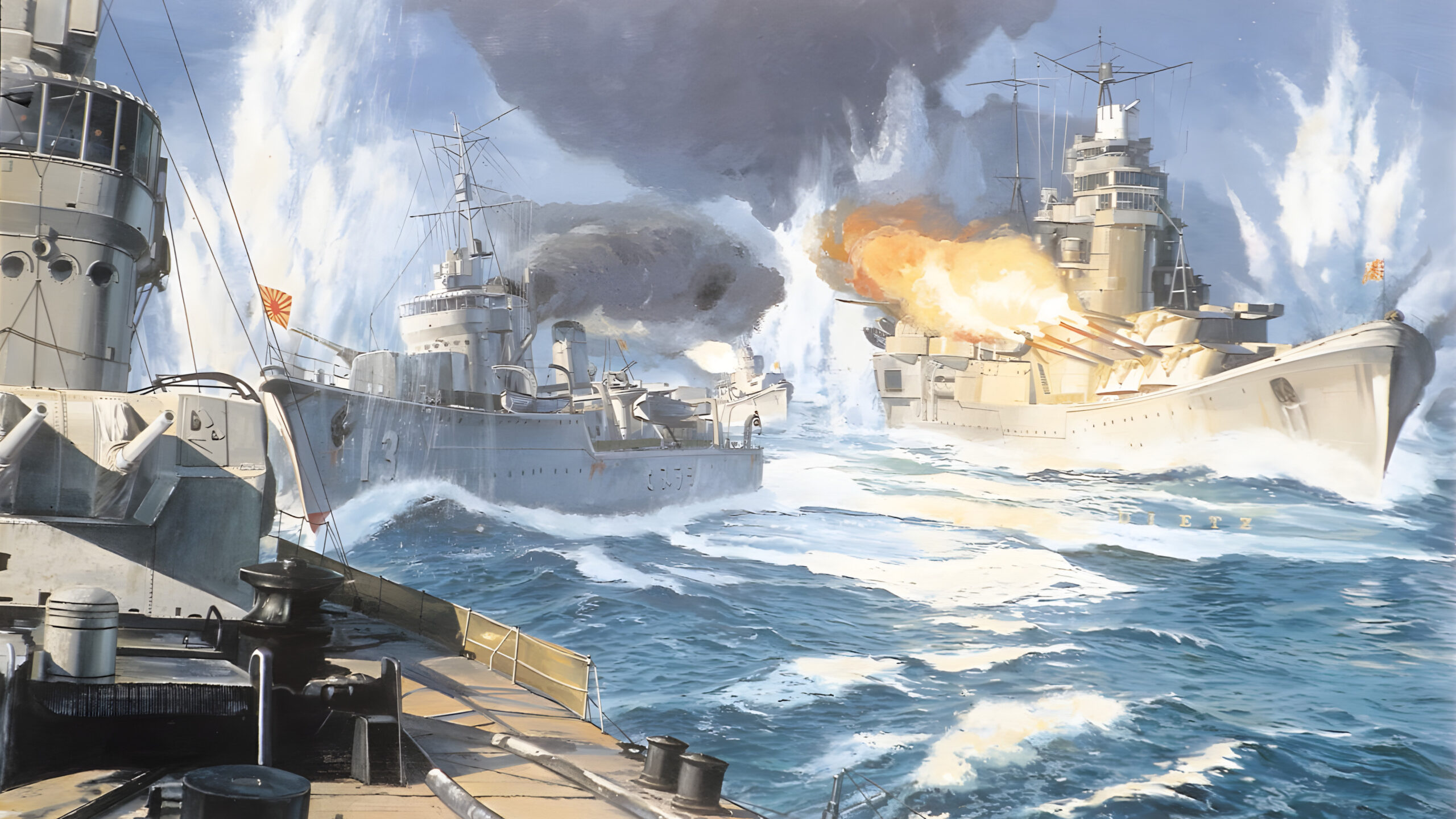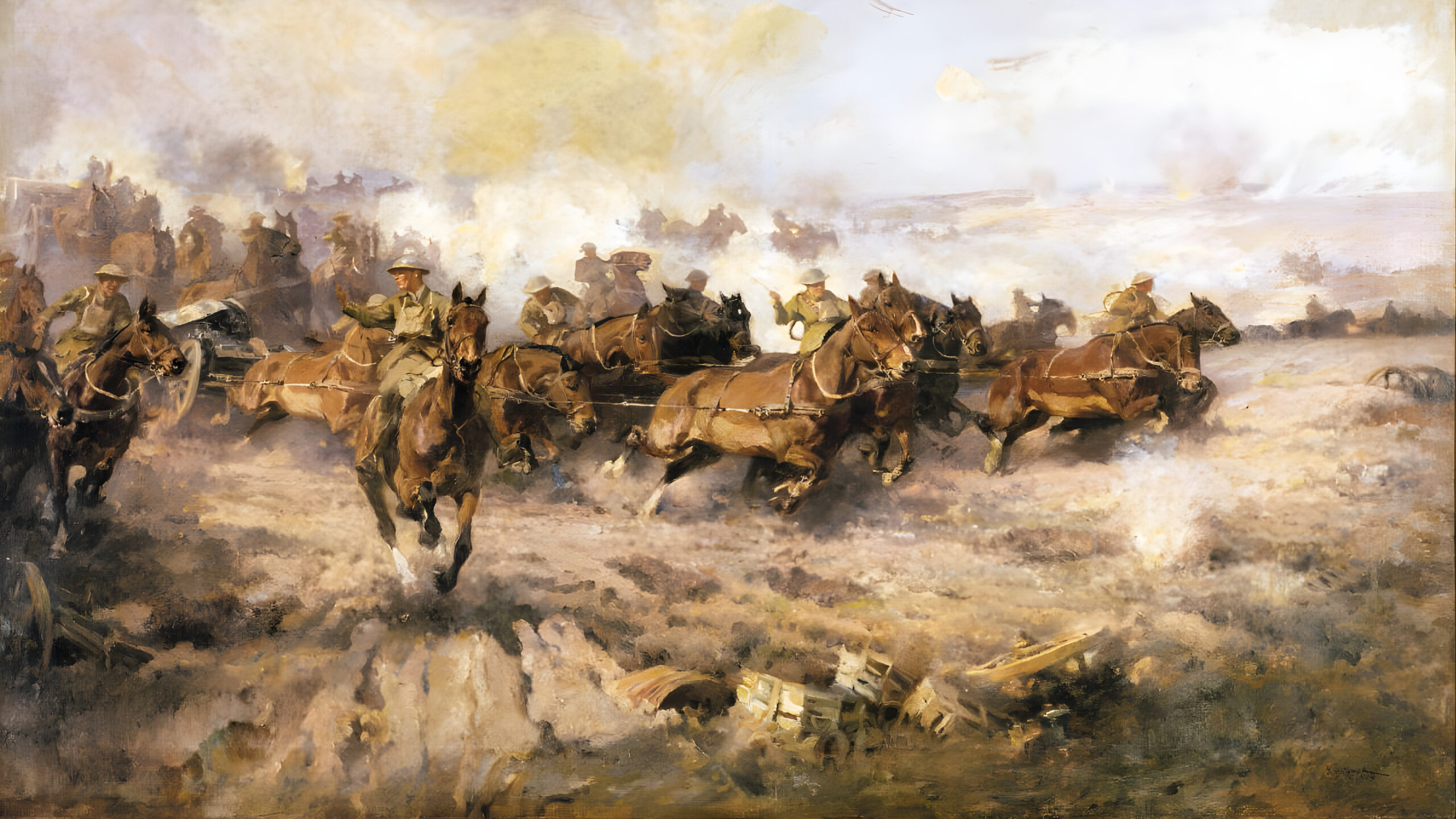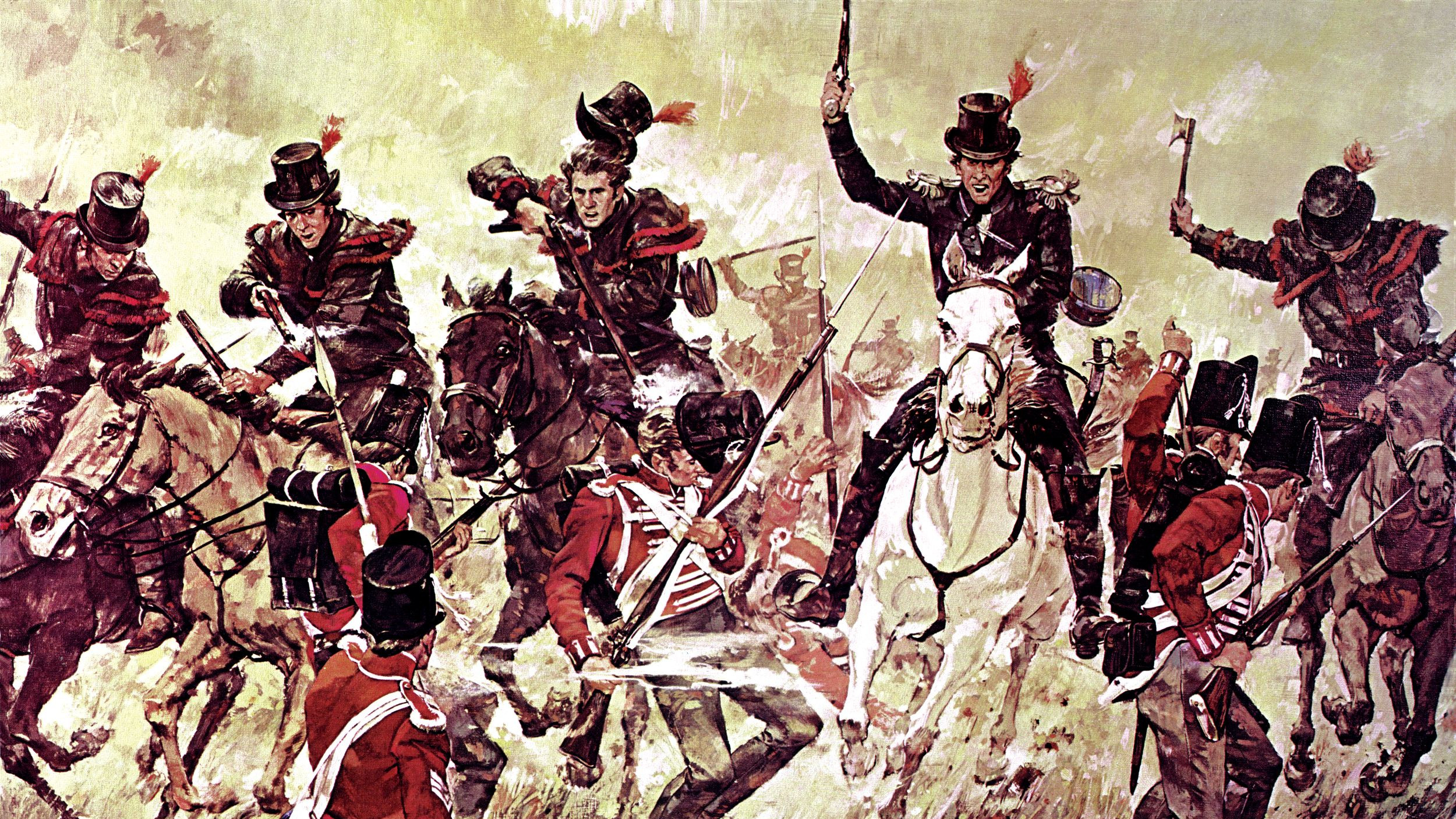Eric Niderost
It was nighttime, and a great battle was soon to be fought at Gaugamela, in the dusty plains and rolling hills of modern-day northern Iraq. The fight would begin the next day, October 1, 331 B.C., and would pit the Macedonian army of King Alexander III, who is better known to history as Alexander the Great, against a mighty host assembled by Great King Darius III of the Persian Achaemenid Empire. The night before a battle, soldiers are often alone in their own thoughts, wondering if this is the last evening of their lives. The Macedonians, who themselves were seasoned soldiers, knew they were facing an enemy that heavily outnumbered them. The odds were enough to give the most experienced veteran pause.
The Macedonians were bivouacked on a series of low hills, about four miles from the main Persian camp, and some of these hills shielded Alexander’s troops from enemy sight. Possessing the high ground, the Macedonians could easily see the Persian camp, a sight that could chill the blood from the sheer spectacle. Thousands upon thousands of campfires spread over the plain: tiny pinpricks of light that seemed to match the twinkling canopy of stars that dotted the sky above.
That sight was awesome enough, but the Macedonians heard a “tumultuous sound of voices arose from [the Persian] camp as if from a vast ocean,” wrote the Greek historian Plutarch. And a vast ocean it was, a sea of humanity that seemed impossible to defeat. Parmenio, one of Alexander’s senior commanders, was impressed enough to go directly to Alexander’s pavilion for an interview.
Parmenio strongly suggested that the Macedonians attack at night; a nocturnal advance might catch the Persians off guard, and lead to certain victory. “No, I will not steal my victory,” Alexander said. He wanted a clear-cut decision, one that Darius, or his Macedonian critics, could not refute. He wanted everything out in the open, an unalloyed triumph, in broad daylight, not something obtained literally like a thief in the night.
Parmenio left Alexander, who retired to bed soon after, seeking a good night’s rest to prepare for the challenges he would face tomorrow. In Egypt he had been hailed as the son of Ammon-Zeus, and the idea was starting to take root in his mind. Yet, confronted with the realities that would face him the next morning, this young demigod had an all-too-human bout of insomnia. Some sources claim he was awake much of the night, mulling over the various plans and strategies he might pursue to gain a victory.
The coming battle was in a sense the climax of a war between east and west that had been intermittently waged for more than a century and a half. The Achaemenid Empire was one of the greatest of the ancient world, a vast domain that stretched from the eastern shores of the Mediterranean to the borders of India, from Egypt and modern-day Turkey through Iran and Iraq and as far east as Samarkand. Upwards of 35 million people lived under Persian rule.
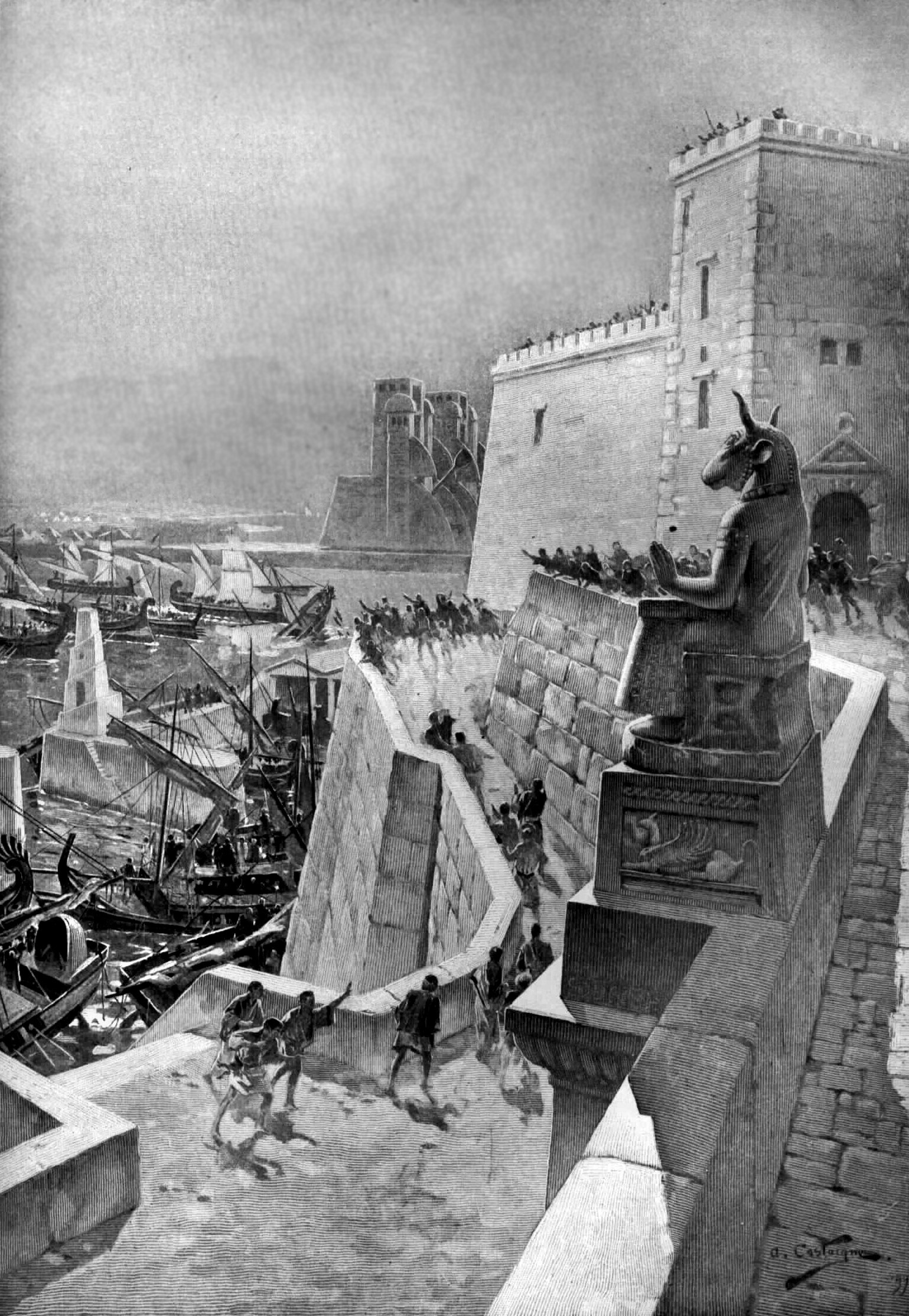
Persian kings Darius I and Xerxes had launched invasions of Europe, respectively, in 492 B.C. and 480 B.C. Their goal was to bring the city-states of Greece under their control. They failed, but the memory of their invasions created hatred in Greece of the Persian empire that would last for generations. Greeks also resented the frequent Persian interventions in Greek regional politics as the years wore on. The Persians would help one side or another, liberally supplying money or materiel, to maintain a balance of power that would keep them in control of events.
Without an external enemy to unite them, the Greek city-states fell into squabbling that often led to war between them. The most famous of these bloody and fratricidal conflicts was the Peloponnesian War from 431B.C. to 404 B.C., which pitted Athens against Sparta. Sparta triumphed, but its hegemony was short-lived. Athens recovered and regained much of its former power and prestige.
Greece finally found a measure of peace and unity, though it was imposed at the point of a sword. King Philip II of Macedon brought all Greece under his control by 336 B.C. Philip was ambitious and wanted to solidify his authority over the Greek city states by uniting them in a war of conquest against Persia. It was a dazzling and—to many Greeks—irresistible proposition. The Persians, whom theGreeks regarded as barbarians, would be vanquished; their meddling and threats would be forever abolished in the Hellenic world. Athens, which had been badly damaged in 480 B.C., and all the other Greek states that had suffered, would finally be avenged.
Philip was assassinated in 336 B.C., and his 20-year-old son Alexander came to the Macedonian throne. Alexander soon proved himself to be a commander of exceptional ability. He had to put down a few brushfire revolts, culminating in the sack of Thebes, but he got the point across to the fractious Greek states. When he was in Asia, Greece remained quiet; on the whole, the Greek city-states supported his war against the Persians.
Alexander left Pella, his Macedonian capital, in the spring of 334 B.C. with 30,000 infantry and 5,000 cavalry. He marched the 300 miles from Pella to the Dardanelles, the narrow waterway that separates Europe from Asia, in just 20 days. His army crossed over to Asia without incident, but the first battle in the war would not be long in coming. Local Persian satraps gathered an army at the Granicus River, about two days march inland. The Persian troops were bolstered by Greek mercenaries. The Persians sought to put a swift end to the Greek invasion by killing Alexander.
The clash at the Granicus River resulted in a Macedonian victory, but in the process the impetuous young king was nearly killed. Alexander lost part of his helmet to a well-aimed Persian battle-axe, and a sword thrust was parried in the nick of time by an officer named Cleitus the Black, who cut the assailant’s arm off. The victory at Granicus gave the Macedonians a foothold in Asia, and the Great King’s main forces were still being marshaled 1,000 miles away.
Alexander could have tried to strike inland, gambling all on one throw of the dice. But the young Macedonian had a clear strategic vision of what he must do. Alexander would follow the west coast of Asia Minor, which had many Greek cities eager to cast off the Persian yoke. In Miletus and Halicarnassus, local Persian garrisons resisted, but for the most part the Greeks welcomed Alexander as a liberator.
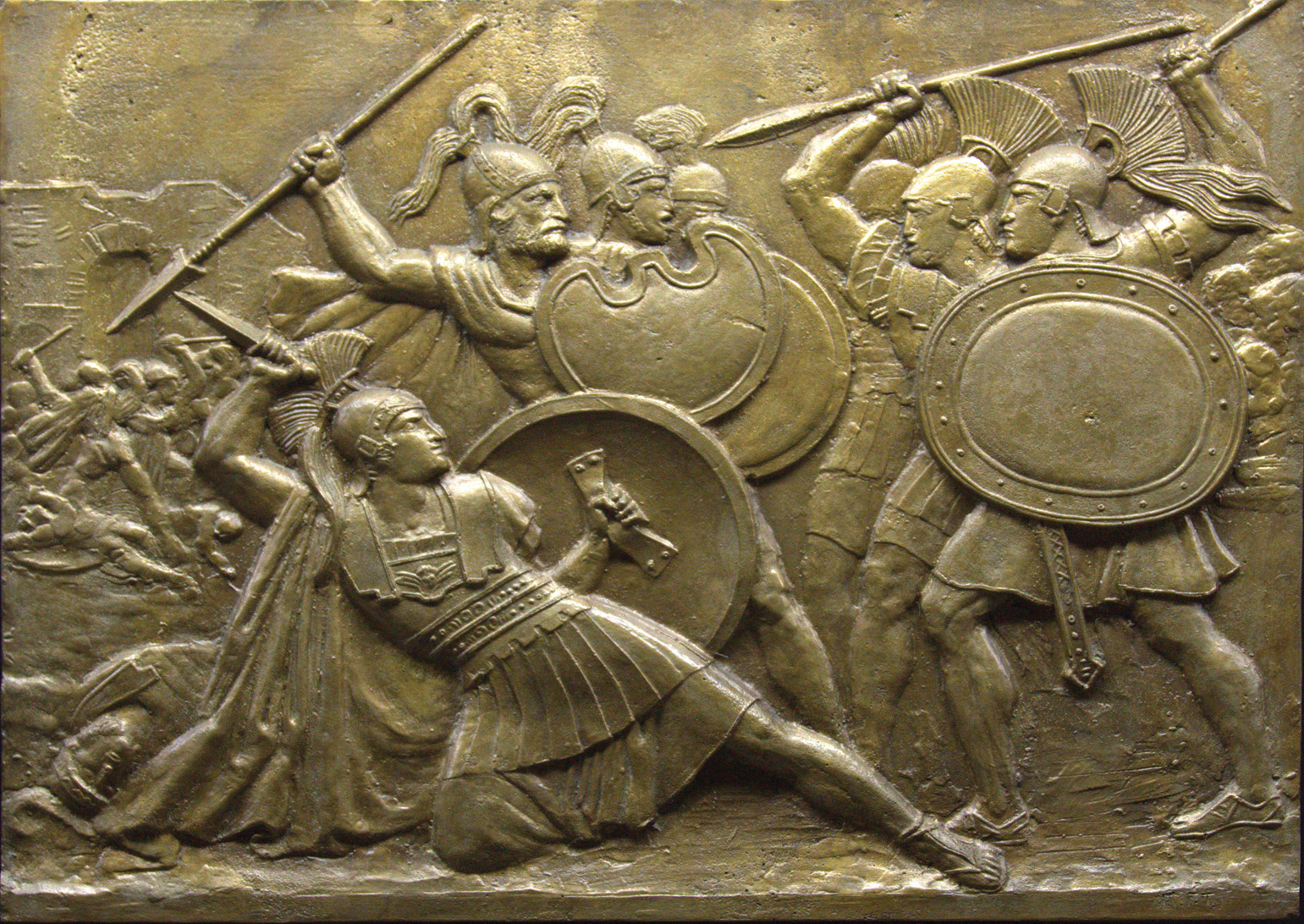
Alexander then met Darius in battle at Issus in southern Anatolia. Darius had a polyglot host that was both large and unwieldy. The Persian army possessed little cohesion. What is more, many of the troops in the Persian ranks were not even loyal to the Great King. The Macedonians quickly put the Persians to rout, and Darius fled ignominiously to avoid capture. He was forced to leave behind much treasure, his splendid pavilion, and his family and harem. The loss of his family and harem was a most humiliating outcome. “This, it seems, is royalty!” Alexander dryly remarked upon dining in Darius’s pavilion.
Alexander continued to go down the coast, avoiding the temptation of pursuing Darius or setting out immediately for the Persian interior. He knew the Persian fleet was still formidable but would be neutralized if they were denied a home port. Moreover, it was easier to supply his own army by sea.
His plan was sound, but it hit a snag when the people of Tyre, a proud island seaport of Phoenician origins, refused to submit to Alexander’s rule. The Macedonians were forced to lay siege to Tyre, an affair that lasted seven months. Both sides exhibited courage, resourcefulness, and daring, but in the end Tyre fell to the Macedonians. Upwards of 8,000 Tyrians were killed in the final assault, and the survivors, around 30,000, were sold into slavery.
Other cities welcomed Alexander as he proceeded down the Mediterranean coast, his ultimate goal the rich and fertile province of Egypt. The Jews happily opened the gates of Jerusalem to the Macedonians; and Egypt, long chafing under the Persian yoke, accepted Alexander as a liberator. He enjoyed this Egyptian interlude, and famously founded the city in the Nile Delta that bears his name, Alexandria.
While he was still in Tyre, Alexander received some peace overtures from Darius. The Great King tried to sweeten the deal by offering 30,000 talents of silver and the hand of one of his daughters. It was all so neat and tidy, and Darius probably thought Alexander would readily accept. If Alexander accepted the deal, as Darius’ son-in-law he would rule all the territories west of the Euphrates in a dual monarchy.
It was an offer that could not be rejected out of hand; that is, at least not without some serious consideration. Alexander summoned his so-called companions, who were his top aides and associates, and asked their opinion of the proposed deal. Most of them held their tongues, perhaps fearing to say the wrong thing. Only Parmenion spoke his mind. “If I were Alexander, I should accept what was offered and make a treaty,” he declared. “So, should I, if I were Parmenion,” replied Alexander.
As far as Alexander was concerned, this was no time for half measures. He aimed to take the entire Achaemenid Empire and would not stop until he had accomplished this goal. In rejecting the offer, he wrote to Darius that it was impossible for two suns to exist in the same sky. The war for the empire would continue.
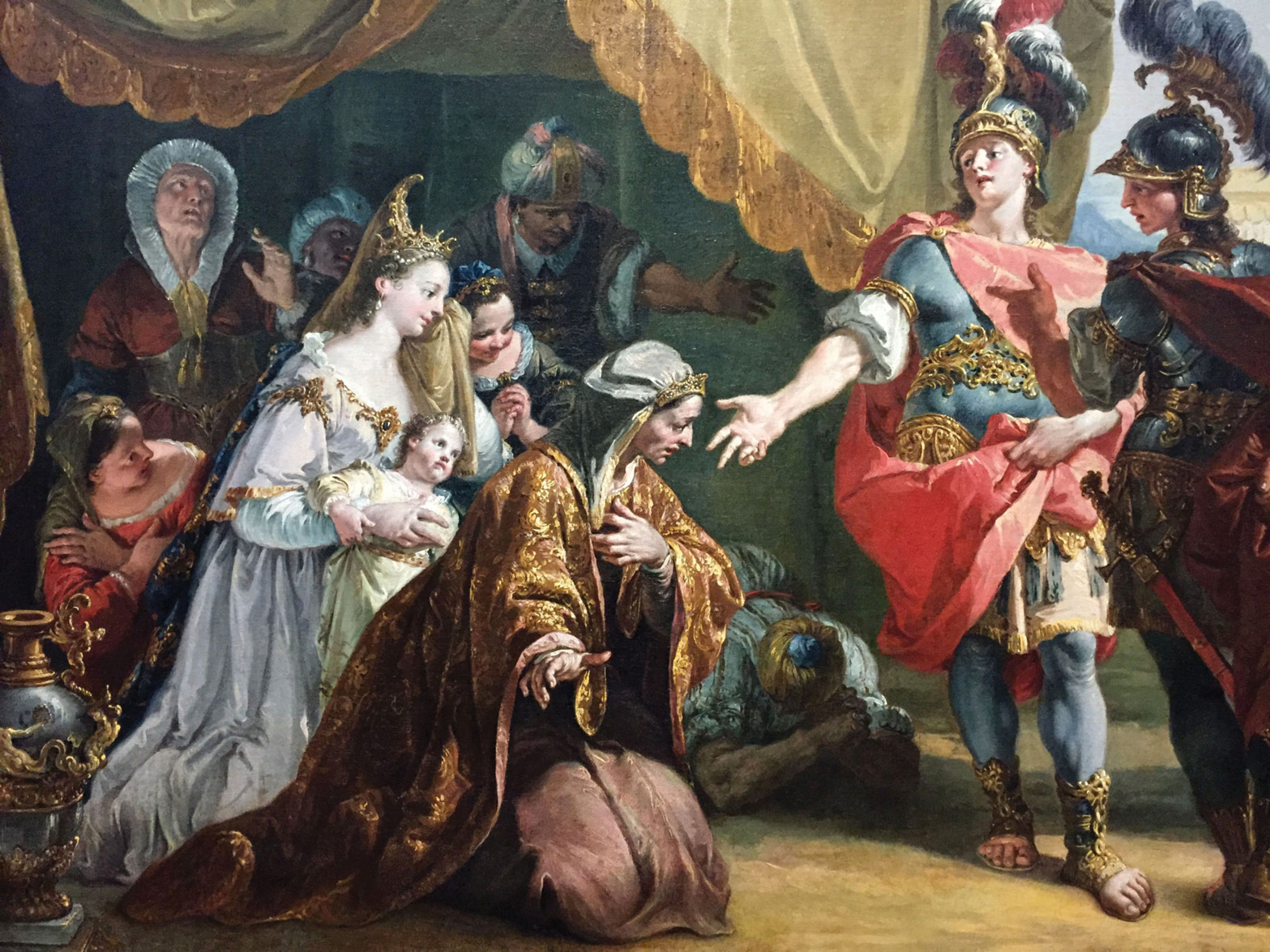
One of Alexander’s main goals was to capture Babylon, the crown jewel of the Persian realm. After crossing the Euphrates River, the most direct route to the great city lay in a southwesterly direction. But Alexander decided to go north instead, with the Euphrates River and the mountains of Armenia to his left.
His decision was based on sound reasoning. The harvest was already in, and all over the Euphrates region the precious grain was stored in well-fortified cities. Darius had ordered his subordinate, Mazaeus, to adopt a scorched-earth policy for the region. That meant that the Macedonian army, underfed and near-starving, would have to besiege each grain-producing city if they would have any chance of obtaining food. It would be a time-consuming process, and also costly in lives. The southern region was also semi-arid and hot at this time of year.
Alexander’s choice of a northerly route took the Persians by surprise, but Darius quickly adapted to the new realities. The Great King might not have been a military genius, but he seems to have grasped at least the rudiments of military strategy and tactics. He rigorously trained his men and tried to adapt their weapons in such a way that they could better deal with the Macedonians and their Greek allies. Since the Macedonian phalanx was standard in the Hellenic world, Darius lengthened the spears his own troops would wield in the coming battle.
Darius dispatched Mazaeus to the main ford of the Tigris River, correctly reasoning that Alexander’s army would soon attempt a crossing, but as soon as he arrived at the ford, Mazaeus judged the current too swift and treacherous for any army to cross. Satisfied with his analysis, he left the area and focused instead on conducting more scorched-earth operations.
Mazaeus’ assessment of the river was not far off the mark. The depth of the Tigris River at this particular crossing was still above a man’s breast, and the swift current was treacherous to anyone trying to ford it on foot. As for heavily laden Greek soldiers, the river was even more difficult to cross. As the first group of foot soldiers began to cross the river, the water hit their shields with such force that some of them were knocked off their feet and drowned. To ensure the safety of his troops, Alexander told those men preparing to cross to link arms and form a human chain across the river. The idea worked, and the bulk of Alexander’s infantry was able to cross with relative ease.
The Tigris was successfully crossed, but it proved so exhausting Alexander allowed his men a day of rest. Luckily for the Macedonians, the Persians did not attack them at the river ford. Darius had already correctly assumed that Alexander would figure out how to ford the river and successfully bring his army across to the eastern bank. Far from being dismayed, Darius was actually looking forward to a battle, because he was confident that he would win this time.
Just before Alexander reached the Tigris River, Darius was in Babylon gathering his forces. The Great King decided to offer battle in the northwest, in what formerly was the kingdom of Assyria. The region consisted of a wide plain not far from a hill that looked like a dromedary camel’s hump. The camel hump hill gave the area its name, because in the Semitic tongue camel is gammalu. History knows the place as Gaugamela.
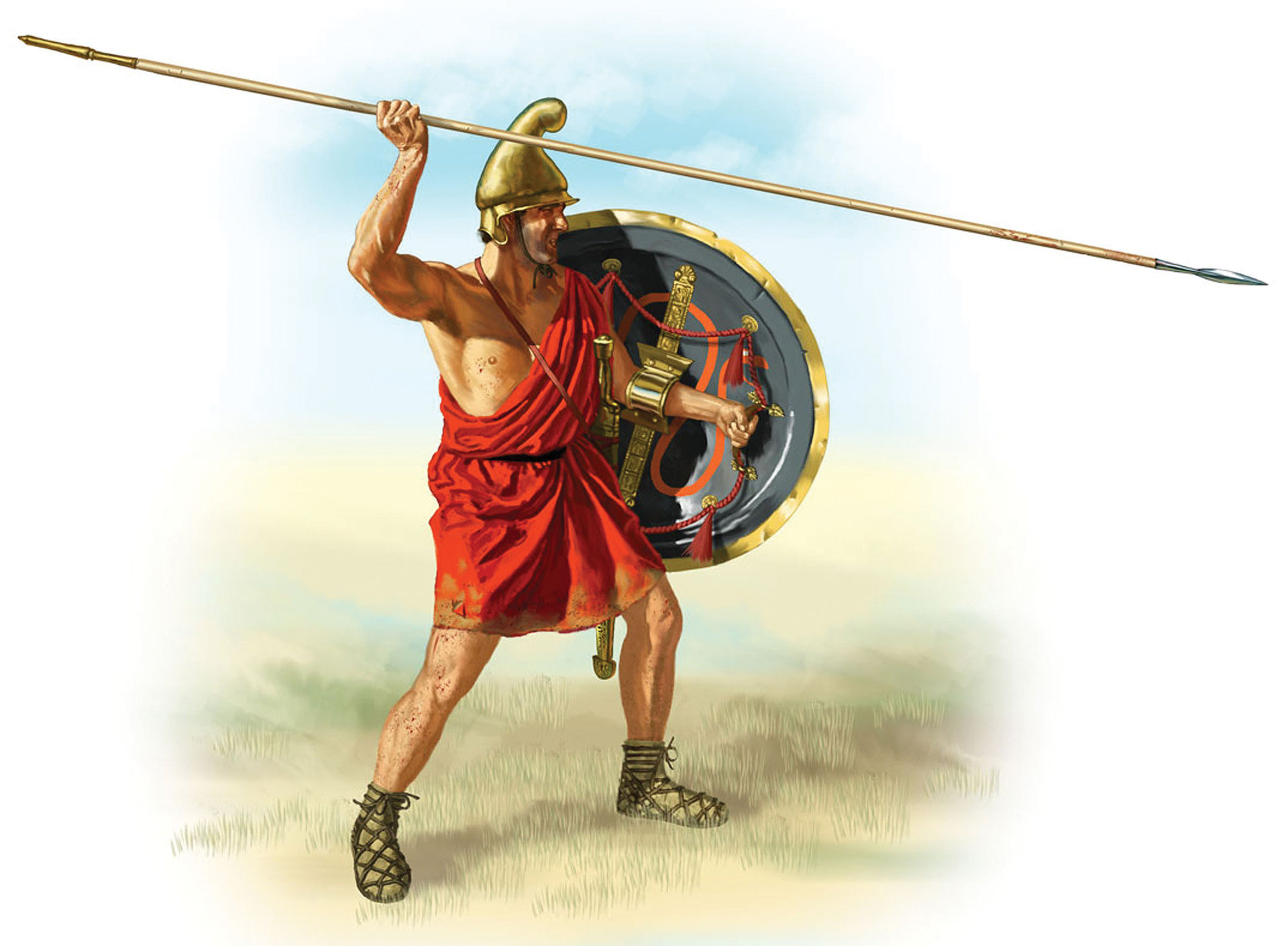
Darius took great pains to ensure Gaugamela gave the Persians all the advantages. Natural undulations in the ground were flattened, and brush cleared away. The Great King set great store in his 200 chariots, swift vehicles that had sharp and long-bladed scythes attached to their wheels. Under the right conditions they were an excellent anti-infantry weapon, mowing down foot soldiers. Yet to perform effectively, the chariots required flat ground and lots of room to maneuver.
When the day of battle finally dawned, Alexander’s generals were surprised to see that he was in his tent still fast asleep. They did not know he had been awake most of the night, reviewing the various scenarios that might occur when the battle began. Alexander fell asleep just before dawn and continued to slumber peacefully until just before noon. At first the generals interpreted this as confidence. They believed their commander was so confident of victory he was able to oversleep. But as the morning hours dragged by, they started to wonder what was occurring. Was there perhaps something amiss?
Any lingering fears were dispelled when the young Macedonian king finally awoke. In the days leading up to the battle, Alexander had taken great pains to ensure that his men were well fed and well rested. This stood in stark contrast to the Persian host, which had been awake and under arms the whole night. Darius feared a night attack, exactly the kind of attack that Parmenio had proposed, but which Alexander had refused to consider. Although the Greeks were numerically inferior, they were confident, well rested, and ready for the day’s exertions.
Alexander owed much to his father Philip II’s army reforms. For all his strategic and tactical brilliance, the young Macedonian monarch needed a fine-tuned instrument to serve his needs and fulfill his exacting requirements. He found all that he needed, and more, with the Macedonian army created by his late father. The Macedonians would be the finest army in the ancient world until the rise of Rome roughly a century later.
The heavy infantry phalanx was the backbone of Alexander’s army. The men who made up the phalanx, called phalangites, were also sometimes called foot companions, the pezhetairoi, to emphasize their special status in royal eyes. The other type of infantry in Alexander’s ranks was the hypaspists, light troops who generally guarded the flanks of the phalanx and had larger shields and short spears. The Macedonian army also had highly skilled skirmishers known as peltastai. Among the ranks of the peltastai were javelin throwers, slingers, and archers.
Instead of the heavy, metal-faced hoplon shield of the Greek hoplites, the phalangite had a much smaller shield strapped to his left arm. It was strapped to his arm because he needed both hands to wield his formidable pike. The pike was another feature that stood out from the traditional armament of the hoplite. The 18-foot pike, the sarissa, was three times as long as the hoplite’s six-foot spear.
The phalangite wore a kind of corselet, but his helmet was generally of a more open-faced Thracian or Phrygian variety, the latter ending with a kind of bulbous top. This contrasted with the Greek hoplite’s typical Corinthian helmet, which incased most of the head and restricted vision and hearing. By abandoning the Corinthian helmet, a phalangite could see, hear, and even breathe better, always important when dealing with a compact body of men fighting in close proximity to one another.
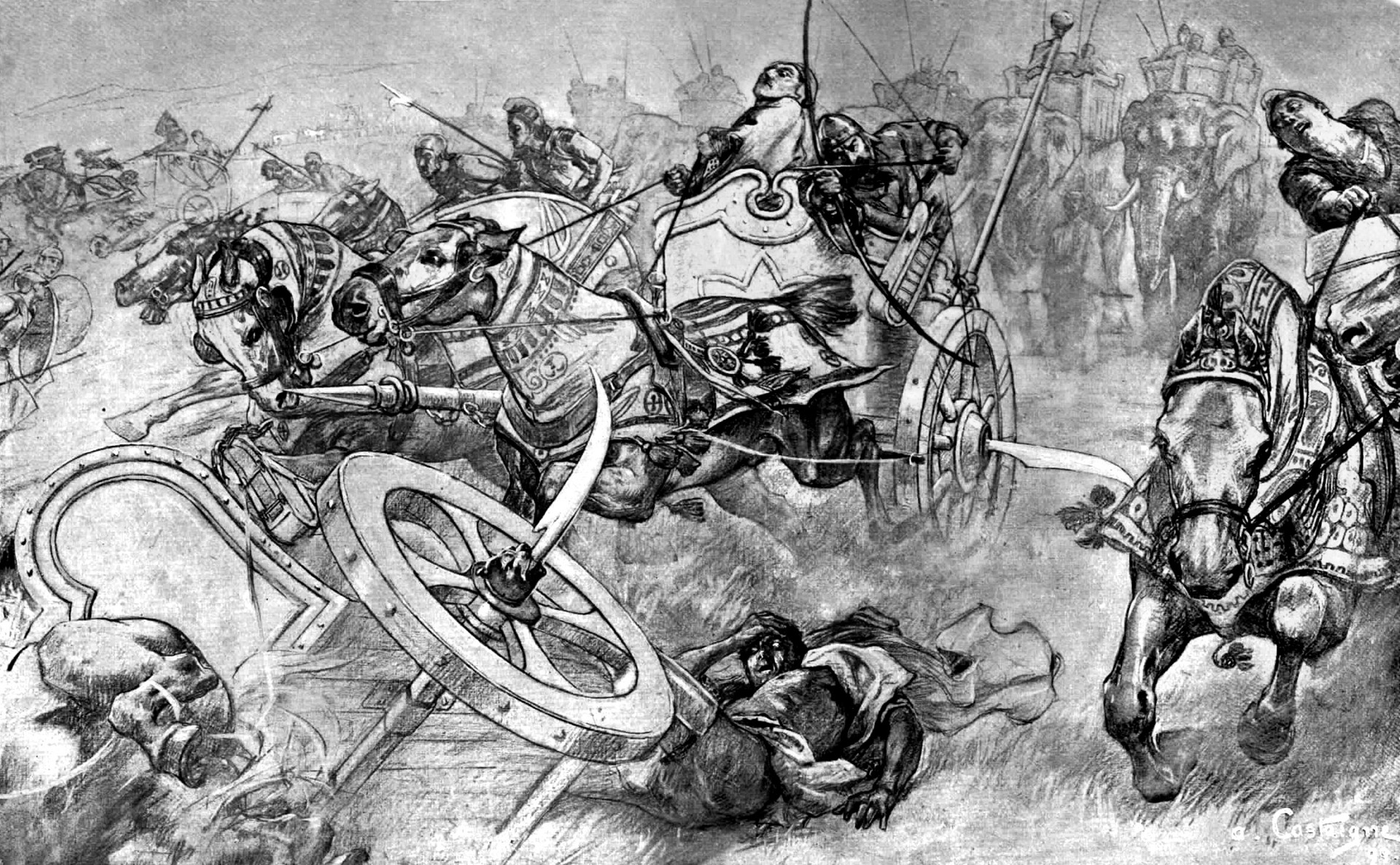
The basic tactical unit of the Macedonian phalanx was the syntagma, a block of men 16 rows deep and 16 across. When a phalanx moved forward, the first four or five rows pointed their pikes toward the enemy, a prickly hedgehog that would be difficult to breech. The other ranks would hold their pikes upright, though bent slightly in the enemy’s direction. This would afford them at least minimal protection against arrows and other missiles.
It is harder to accurately describe the Persian host. As at Issus, it was essentially a polyglot force that included troops from the many diverse nations that populated the far-flung Achaemenid Empire. There were Bactrians, Scythians, and Indians included in the Persian formations. Various tribal peoples also filled the ranks, warriors who had their own distinctive weapons, costume, and ways of fighting. The Persians and the Medes, the peoples that were the historic foundations of the empire, also were represented in substantial numbers.
Ancient sources do not reveal much about the Persian infantry, leading to one of the great mysteries of Alexander’s campaigns: why were the Persian elite guards nicknamed the Immortals? During the earlier Persian invasion under Xerxes, this elite force of 10,000 men were famed throughout the Greek world as formidable fighters, as famous as Napoleon’s Old Guard would be centuries later. They seem to have disappeared by Alexander’s time, but the Great King did have a 1,000-man bodyguard called the apple bearers, so called from the globular gold and silver pommels on their spear butts.
Although it is hard to discern the plan that the Great King of Persia had for the battle, he apparently saw the coming fight as more of a cavalry battle in which his chariot corps and regular horsemen would win the day. Darius knew that his infantry could probably make little headway against the Macedonian phalanx. While the Great King did give them a literal fighting chance by giving his infantry longer spears, they could not match Macedonian training and discipline.
Darius hoped that the Persian cavalry, or perhaps even the chariot corps, might make substantial headway and perhaps achieve a breakthrough that would lead to victory. Since Darius had four or five times as many men as Alexander, the Persian cavalry might lap around the Macedonian phalanx formation and take them from the flank and rear. Of course, they also would have to neutralize Alexander and his Companion cavalry, which was no easy task. But Darius was hopeful that sheer weight of numbers would turn the tide in his favor.
Once Alexander was fully awake, he reassured his generals that all was well. One of the Macedonian king’s strengths as a commander was his recognition of morale. He did his best to make sure his men were well fed, clothed, armed, and confident of ultimate victory. Mounting his horse, he went all along the Macedonian line, often calling out the names of individual soldiers with warm personal greetings.
He also spoke to the troops in general, reminding them of their bravery in the past, and their performances in battles like Issus. He appealed to them as their king and their general, a man who was about to take the same risks as they were, and he urged them to fight for Macedonia with their customary skill and courage.
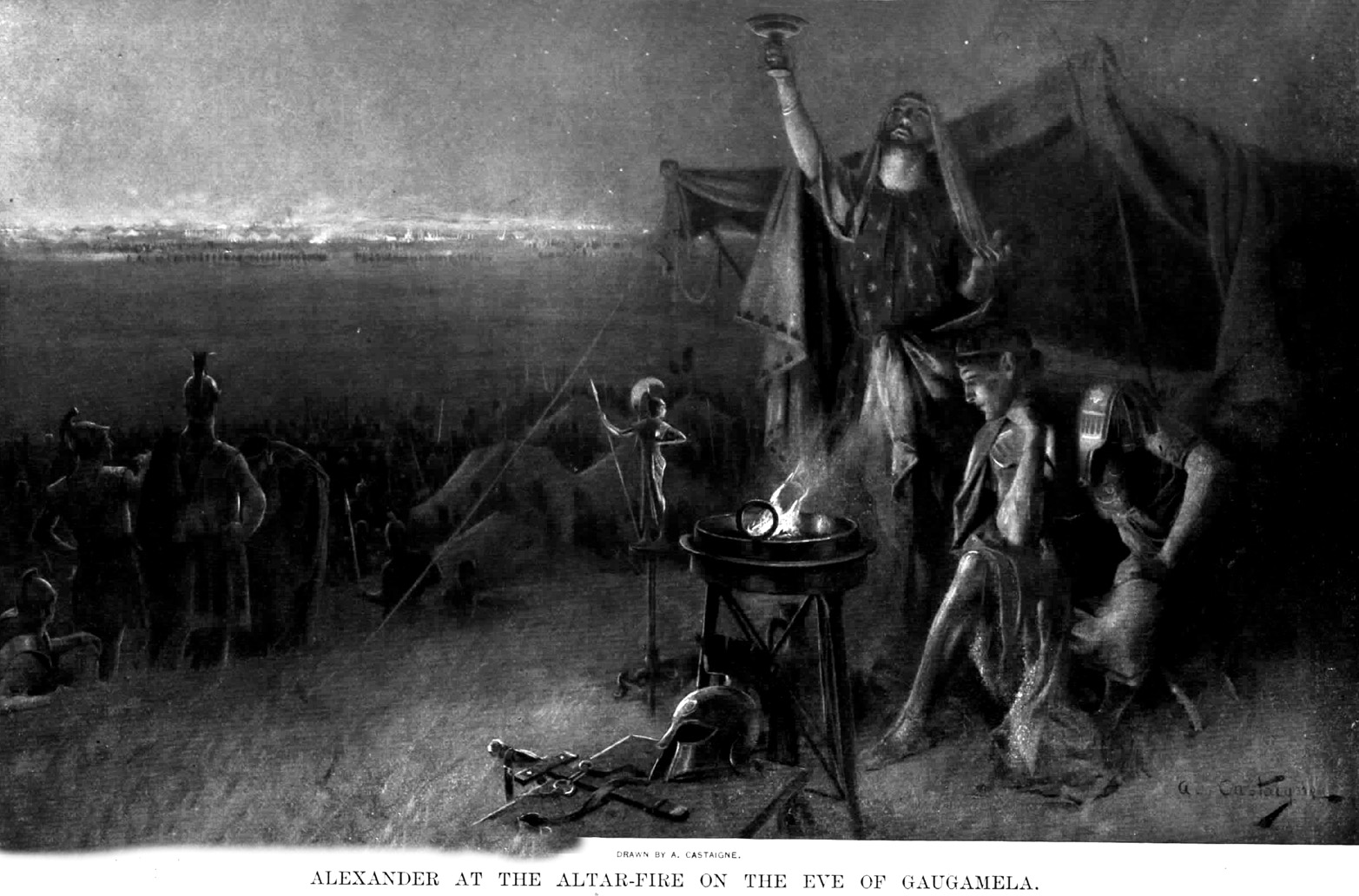
Alexander’s appeals struck a responsive chord, and ancient chroniclers insist that at that very moment, an eagle could be seen flying over the Macedonian army. The eagle circled lazily, probably drifting on the thermal currents that arose from the sun baked plains; but it changed direction and flew over the Persians. Alexander pointed to the eagle, and said the majestic bird was an omen of Macedonian victory. The troops responded favorably, because every man knew that eagles were the favorite bird of all-powerful Zeus, king of the Greek gods.
Alexander’s battle arrangements were much like the deployments used at Issus. The Macedonian center featured the heavy infantry phalanx under the leadership of Craterus. By contrast, the right wing had light troops known as hypaspists under the command of Parmenion’s son Nicantor. Alexander and his Companion cavalry also took positions on the right. The left was led by Parmenion and was mainly Thessalian and Thracian horsemen.
The Macedonian king made some key adjustments to deal with possibility of a Persian flank envelopment. Because Darius’ host Persians outnumbered the Macedonians, their overall frontage was much greater. Envelopment, or perhaps even a double envelopment, was not out of the question. To guard against this possibility, he placed infantry at angles on the ends of both right and left flanks. Alexander also had a second line of Greek hoplites standing right behind the massive Macedonian phalanx formations. More maneuverable than their Macedonian phalanx colleagues, they could quickly turn around and deal with any attacks from the rear, if a Persian envelopment should succeed.
The battle began with a clever stratagem by the Macedonians. Alexander took his Companion cavalry and immediately moved to the right in an oblique angle. To the Persians it appeared as though the Macedonians were trying their own flank arrack, so to counter this movement Darius ordered Bessus to move left. As the Persians moved further and further to the left, they began to go beyond the ground they had previously cleared for better troop movement.
But as they moved left to block Alexander’s thrust, they inadvertently opened a gap in their battle line, separating the Persian left from the Persian center. Alexander moved to quickly exploit the situation. Alexander’s original oblique movement to the right with his Companion cavalry might even have been a deliberate feint on the Macedonian king’s part to create just such a situation.
In any case Alexander and his galloping horsemen quickly changed direction and started towards the widening gap in the Persian line. Darius, who was watching these movements with growing alarm, responded by having his elite household cavalry rush forward to meet the theat. Some accounts refer to these them as the so-called kinsmen cavalry because some of the men were blood relatives of the Great King.
While the Macedonian right wing went through its paces with the Persian left, it was time for the centers of the two armies to see action. Darius launched an attack by his scythed chariot corps, an advance supported by clouds of Persian cavalry on the flanks and rear. Alexander had anticipated just such an attack, so the men were drilled in countermeasures. The Macedonian phalanx locked shields and began beating those shields with their pikes. The result was an ear-splitting din that scared many of the chariot horses, causing them to veer off and gallop wildly across the open plain. In at least a few cases the panicked chariot horses, completely out of control, slammed into Persian ranks and did terrible damage to their own side. The terrified animals, eyes rolling white with fear, had to be killed before the rampage would stop.
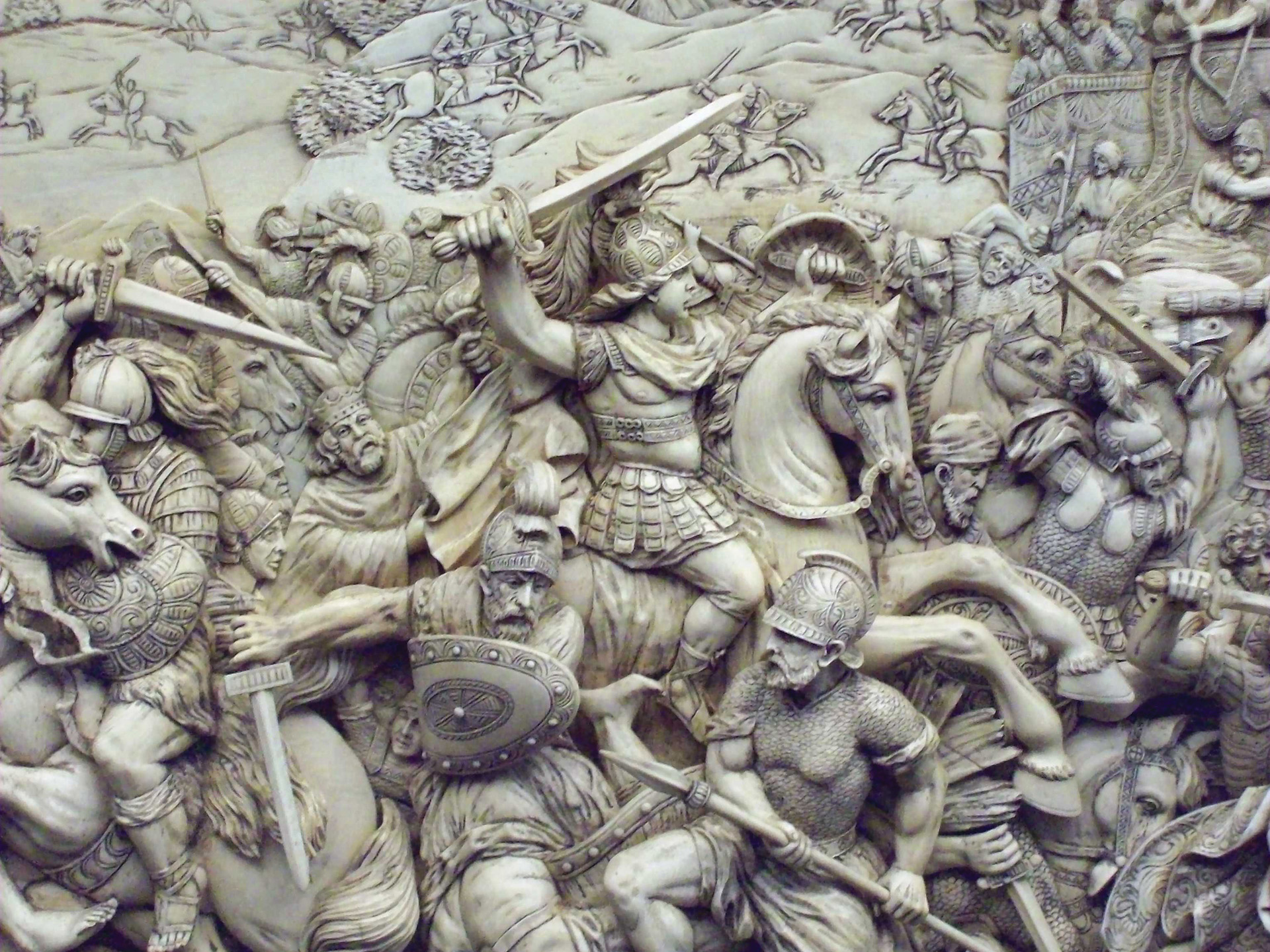
But some chariot horses were not afraid, and the Macedonians had other methods to deal with them. In some cases, the dense phalanx parted, opening a clear path for the chariots while at the same time avoiding their deadly wheel blades. Light troops then killed the horses with javelins with relative ease. Once a chariot was immobile, its scythed blades forever stilled, arrows and javelins could kill the crew, which usually consisted of a driver and one soldier.
Ancient sources do record that at least in a few isolated cases the scythed chariots were effective. By sheer momentum, some chariots slammed into Macedonian ranks with full force. They cut through shields like they were thin parchment, at the same time severing arms and other body parts with horrifying ease. As soldiers tried to avoid the rotating blades, they stumbled and fell, leaving themselves open to further mutilation.
The scythed chariots instantly severed heads. The heads, which rolled in the dust, had the “eyes still open and the expression of the countenance unchanged,” wrote Greek historian Diodorus. In other cases, the blades “sliced through ribs with mortal gashes and inflicted a quick death,” he wrote. But from the Persian point of view, only a handful of chariots succeeded in their mission. The chariot, once the queen of the battlefield in ancient Egypt, was shown to be outmoded and ultimately obsolete.
Once the chariot corps was disposed of, the Macedonian phalanx had to deal with Persian infantry and cavalry. Clouds of Persian arrows filled the air, and the phalanx took some casualties, but the Persian infantry could make little headway against those long pikes. Nevertheless, by sheer weight of enemy numbers the phalanx was hard pressed, and the fighting at this stage was intense.
It was much the same for the Macedonian left flank, which was commanded by Parmenio. The Persian numbers were overwhelming in this sector of the battlefield and boasted some of the Persian army’s finest troops, including elite cavalry units. The Persian right now pressing their attack was under Mazaeus, a tough and resourceful commander, but once again it was the sheer weight of Persian numbers that seemed to swing victory in favor of the Persians.
Seeing that Parmenio was hard pressed, Mazaeus sent 2,000 Cardusii cavalry—a hard-fighting mountain people from northern Persia—together with 1,000 picked Scythian horsemen to ride around the Macedonian flank. The Scythians were well known as hard-riding, hard fighting, and supremely mobile warriors.
If the Cardusii and Scythian cavalry had seriously attacked the Macedonia flank and rear, they might have had a decisive impact on the course of the battle. Yet the lure of loot proved too great a temptation to resist. The horsemen went directly towards the baggage train, which was located far in the rear. The baggage train also held some Persian captives, including Darius’s own mother Sisyngambris, who had been captured with the rest of the Persian king’s family, wives, and concubines after Issus.
When the Scythian and Cardusii cavalry suddenly appeared in the baggage it seemed as if all hell had broken loose. The baggage camp dissolved into sheer chaos, with shouts, screams and running about in all directions. The horsemen quickly killed the camp guards, a task that was completed when some of the male Persian captives seized weapons and joined the fight.
While the Scythians and Cardusii plundered, most the Persian captives ran to them joyfully, looking upon them as liberators, but Darius’s mother was not one of them. She stayed where she was, even though liberation was at hand. Alexander had always shown her the greatest courtesy and respect, and out of gratitude she remained where she was. Other female captives, perhaps not so grateful, ran to join the horsemen.
Accounts slightly differ, but the baggage train raiders were eventually chased off, and the danger to the Macedonian rear; if such a danger ever existed, was neutralized. Alexander’s prescient tactic of having a Greek phalanx right behind the main Macedonian one had paid off.
In the meantime, Alexander saw that it was time to finish off the Persians. So, he sought desperately to locate Darius among his Persian host and engage him in one-on-one combat. If Darius were killed, wounded, or compelled to surrender, the entire Persian army would collapse. Darius was not just a general, but the heart and soul of the Persian battle effort. Leaderless, and without a sense of direction, the troops would probably take to their heels, or hooves as the case may be.
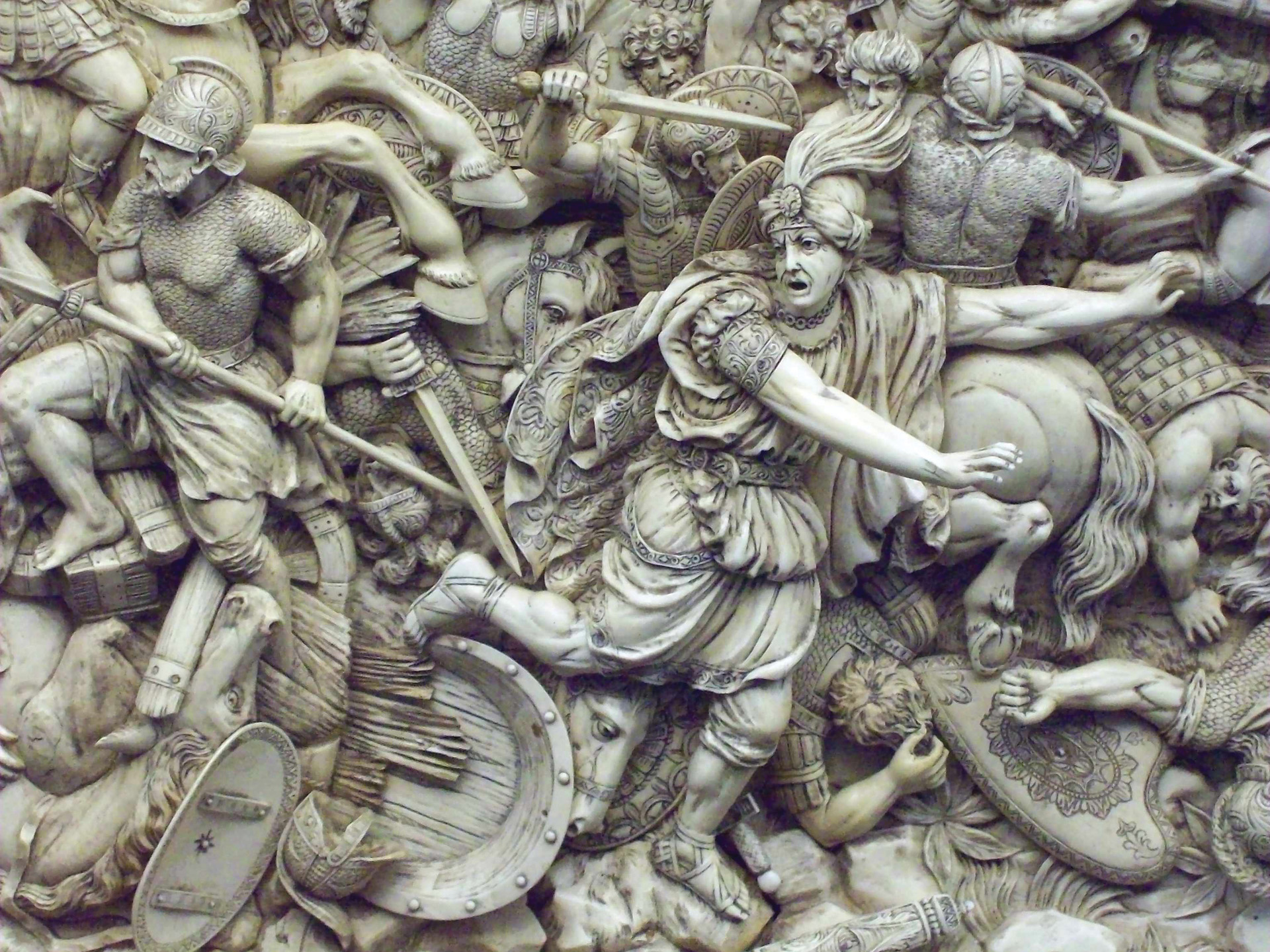
Darius was no physical coward when it came to combat. He hurled javelins from his chariot and generally gave a good account of himself during the battle. But he did seem to fear capture more than even death and tended to try and flee when he believed the enemy had surrounded him. According to some accounts, Alexander and his Companion cavalry drew close to Darius’s chariot and the Macedonian king hurled a javelin, but it missed by inches and struck and killed the driver instead.
Other accounts state that the Great King tumbled to the ground as the javelin flew by; perhaps he lost his footing while trying to dodge the incoming missile. Probably nothing was hurt but his pride, but while he momentarily rolled in the dust a great shout arose from some nearby Persian horsemen who had been observing the action. The shout was one of despair and alarm, because in the excitement of battle and the rolling clouds of dust they believed that Darius had been killed.
The Persians who first witnessed Darius’s fall began to run away, sparking a panic that spread through the ranks like a deadly contagion. It did not really matter that Darius got up and was shown to be healthy and intact; the stampede gained momentum and assumed a life of its own. Cavalry that had been fighting bravely moments before now vied with each other to be the first to escape. Infantry that had been facing the bristling Macedonian pikes with courage and elan suddenly ran from the field as fast as their legs could carry them.
Even Darius’s own bodyguards, the apple bearers, were not immune, and their ranks thinned as man after man decided to abandon their positions. With his bodyguard melting away, and Alexander drawing ever closer, the Great King decided it was high time to leave. Darius jumped from his chariot, mounted a nearby horse, and galloped away. By this time, much of the battlefield was obscured by thick, yellowish clouds of dust, loose soil that been kicked up by the thousands of feet and hooves.
Oddly enough, Darius had 15 war elephants with him, a type of warfare that was new to the Macedonians at the time and might have even panicked them if the conditions were right and they were employed in an efficient manner. If they were indeed present that day, they were not used. When Alexander invaded northwest India five years later, his army would have to face these gigantic pachyderms in battle.
Alexander wanted to pursue his beaten foe, but Darius’s escape was aided by those thick clouds of dust. The Macedonians could not determine what route the Great King had taken in his flight. Alexander was sorely disappointed he did not capture Darius, because his conquest of the Achaemenid Empire would not be complete until he had successfully dispatched his royal rival.
Darius indeed had no intention of surrendering or stepping down from the throne. The empire was vast, and he hoped the eastern provinces would still remain loyal. Darius managed to scrape together the detritus of his defeated army and create a new force, a nucleus that he hoped to build upon in the weeks and months to come. The remnants included Bessus’ Bactrian cavalry, survivors of his golden-apple bodyguard, and 2,000 Greek mercenaries.
Unfortunately, Darius never got a third chance to save his empire. Bessus and several other satraps arrested the king, and it was said in token of his high status they clapped him in golden chains. This captivity was short lived because Bessus, who harbored royal ambitions himself, had Darius murdered.
Gaugamela marked the end of the Achaemenid Empire for all intents and purposes. Even if he had lived, it is unlikely that Darius would have turned the tables on Alexander and emerged triumphant. Ancient sources are notoriously unreliable when it comes to casualty figures. The Persians suffered 40,000 casualties, while the Macedonians 1,000 cavalry and 300 infantry, according to modern estimates.
Alexander’s decisive victory over the Persians at Gaugamela was another milestone in his legend as one of the world’s greatest conquerors.
